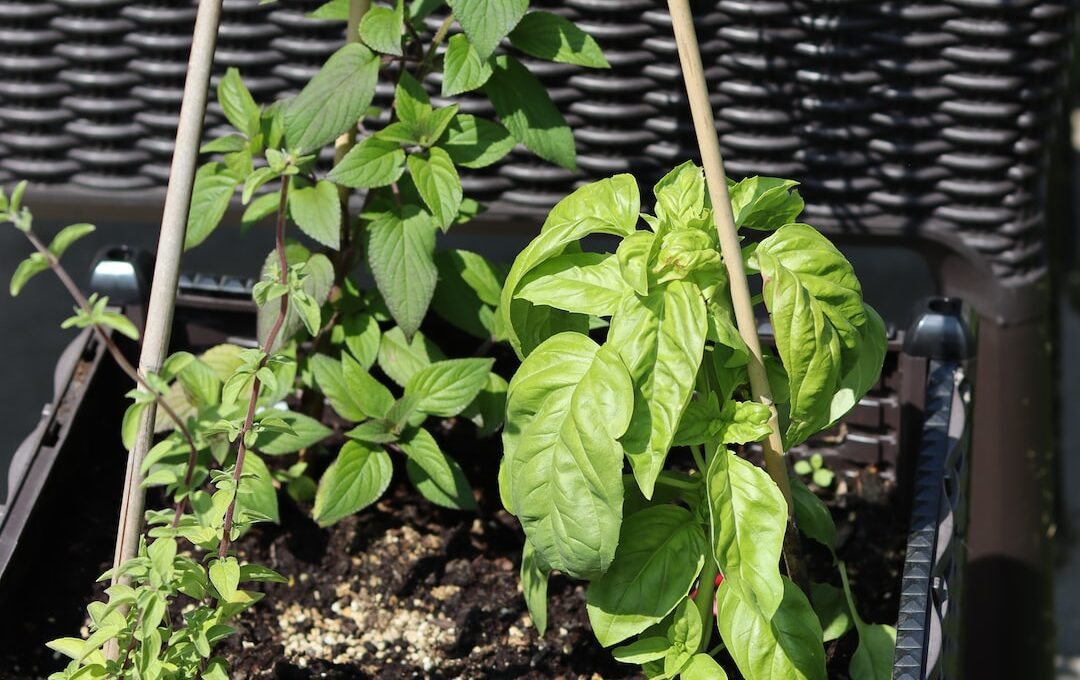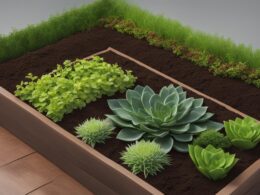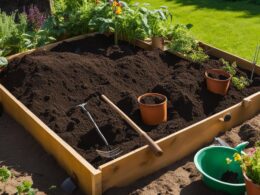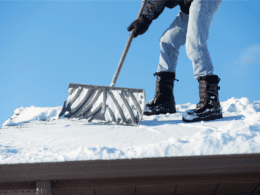Are you a proud oregano plant owner? If so, you might be wondering how often you should water your beloved herb. Well, fret not! In this article, we will guide you on the proper watering frequency for your oregano, ensuring its safety and longevity.
Understanding your oregano’s watering needs is crucial to its overall health. You need to assess the moisture levels in the soil to determine when it’s time to water. By providing adequate drainage and avoiding overwatering, you can prevent your oregano from drowning and developing root rot.
Watering techniques are also essential in keeping your oregano happy. Adjusting the watering frequency based on its growth stage and observing its response to watering will help you maintain a thriving herb.
So, whether you’re a beginner or an experienced gardener, follow our tips to ensure your oregano receives the right amount of water and flourishes in its environment.
Let’s dive in and uncover the secrets to watering your oregano safely!
Quick Summary
- Oregano prefers well-draining soil and should be watered deeply but infrequently.
- Adjust watering frequency based on the plant’s growth stage and response to watering.
- Water at the base of the plant to prevent moisture from sitting on the leaves.
- Avoid overwatering, as it can lead to root rot and other diseases.
Understanding Oregano’s Watering Needs
Are you wondering how often you should water your oregano plant to ensure its optimal growth and flavor? Well, assessing your oregano’s watering needs is essential for maintaining a healthy plant.
Oregano is a drought-tolerant herb, so it doesn’t require excessive watering. However, it’s crucial to strike a balance and provide enough moisture for its well-being. To optimize your watering schedule, you need to consider a few factors.
Firstly, check the soil moisture regularly. Stick your finger about an inch into the soil, and if it feels dry, it’s time to water. Oregano prefers well-draining soil, and overwatering can lead to root rot and other diseases. Aim to water your oregano deeply but infrequently. This encourages the plant’s roots to grow deeper and become more resilient.
Secondly, take the weather conditions into account. Oregano plants need more water during hot, dry periods. On the other hand, during cooler months or periods of rain, you can cut back on watering.
Lastly, avoid watering oregano from above. Instead, water at the base of the plant to prevent moisture from sitting on the leaves, which can promote fungal diseases.
By assessing your oregano’s watering needs and optimizing your watering schedule, you can ensure that your plant thrives and provides you with flavorful leaves for all your culinary needs. Remember, moderation is key to keeping your oregano happy and healthy!
Assessing Soil Moisture Levels
Check the moisture levels of your soil to ensure your oregano receives the optimal amount of hydration. Assessing soil moisture is crucial in determining when and how often to water your oregano plant.
To accurately gauge the moisture levels, there are a few techniques you can use.
First, the finger test is a simple and effective method. Stick your finger about an inch into the soil near the base of the plant. If the soil feels dry at this depth, it’s time to water your oregano. On the other hand, if the soil feels moist, it’s best to wait before watering again.
Another technique is using a moisture meter. These handy devices are inserted into the soil and provide a digital reading of the moisture content. This eliminates any guesswork and ensures that your oregano is neither overwatered nor underwatered.
Lastly, consider the appearance of your oregano plant. If the leaves are drooping or turning yellow, it may be a sign of underwatering. Conversely, if the leaves are wilting and the soil feels constantly wet, it may be a sign of overwatering.
By regularly assessing soil moisture levels using these techniques, you can provide your oregano with just the right amount of water, promoting its health and growth.
Watering Oregano in Different Seasons
During different seasons, you’ll need to adjust the watering schedule for your oregano to ensure it thrives.
In winter, when the temperature drops and the days are shorter, your oregano will require less water. It’s important to be cautious not to overwater during this season, as excess moisture can lead to root rot and other problems. Only water your oregano when the top inch of soil feels dry to the touch. This will help prevent waterlogged soil and promote healthy root development.
On the other hand, in the summer when the temperature rises and the days are longer, your oregano will need more frequent watering. The heat can cause the soil to dry out quickly, so it’s essential to keep a close eye on the moisture levels. Water your oregano when the top few inches of soil feel dry, but be careful not to oversaturate. Aim to water in the early morning or late evening, when the sun is not as intense, to minimize evaporation.
By adjusting your watering schedule according to the season, you can provide the optimal conditions for your oregano to flourish. Remember, it’s better to underwater than to overwater, as oregano prefers slightly drier conditions. With a little attention and care, your oregano will thrive throughout the year.
Avoiding Overwatering
To prevent drowning your oregano, make sure the soil is as dry as a desert before watering. Oregano plants are quite resilient and can tolerate dry conditions better than being overwatered. Overwatering is one of the most common mistakes made by gardeners, and it can lead to root rot and the eventual death of your plant. So, it’s essential to avoid overwatering your oregano.
To help you gauge when to water, here are some signs of overwatering to look out for:
-
Yellowing leaves: If the leaves of your oregano plant start turning yellow, it could be a sign of overwatering. The excess moisture prevents the roots from getting enough oxygen, leading to nutrient deficiencies.
-
Wilting or drooping: While it may seem counterintuitive, overwatered plants can also wilt. The roots become waterlogged, inhibiting their ability to take up water properly.
-
Root rot: Overwatering can create a perfect environment for fungal infections, causing the roots to rot. If you notice a foul odor or black, mushy roots, it’s a clear sign of overwatering.
Remember, it’s better to underwater than overwater your oregano. Let the soil dry out completely between waterings to ensure the health and longevity of your plant.
Providing Adequate Drainage
When it comes to oregano, it’s important to provide adequate drainage. Good drainage is essential because it helps prevent root rot and other water-related problems. Make sure to use well-draining soil or containers to ensure your oregano plants thrive.
Importance of Good Drainage
With proper drainage, your oregano will thrive, just like a vibrant green oasis in your herb garden. Proper watering techniques are crucial for the health of your oregano plant. One of the most important aspects is providing adequate drainage. Good drainage allows excess water to flow out of the pot, preventing the roots from becoming waterlogged and rotting. This is essential because oregano plants prefer slightly dry soil. Overwatering is a common mistake that can lead to root rot and the decline of your plant. Remember to water your oregano only when the top inch of soil feels dry.
Additionally, make sure your pot has drainage holes and use a well-draining soil mix. By following these simple steps, you can ensure that your oregano receives the right amount of water and thrives in your herb garden.
Using Well-Draining Soil or Containers
For optimal growth, your oregano will thrive in well-draining soil or containers that allow excess water to escape, ensuring healthy roots and a flourishing herb garden. It’s important to use well-draining soil or containers because oregano doesn’t like to sit in waterlogged conditions, which can lead to root rot and other diseases.
By providing adequate drainage, you’re ensuring that water doesn’t accumulate around the roots, preventing potential damage. Additionally, make sure your oregano receives adequate sunlight, as it’s a sun-loving herb. Place it in a location where it can get at least six hours of direct sunlight per day.
Proper pruning is also essential for maintaining the health of your oregano plant. Regularly trim back any dead or leggy stems to encourage new growth and prevent overcrowding.
Following these tips will help you grow robust and flavorful oregano in your herb garden.
Is the Watering Frequency for Lantana Similar to Oregano?
The watering frequency for Lantana may differ compared to oregano. While it’s crucial to keep both plants adequately hydrated, Lantana typically requires regular watering to stay healthy and vibrant. On the other hand, oregano thrives in drier conditions, needing less frequent watering. Understanding the specific watering lantana frequency will help maintain its beauty and growth.
Watering Techniques for Oregano
To keep your oregano happy and healthy, make sure you water it regularly using proper watering techniques. Watering frequency is crucial for the well-being of your oregano plant. Aim to water the plant deeply once a week, allowing the water to reach the root zone. This will encourage the roots to grow deeper and make the plant more resistant to drought. However, always check the soil moisture before watering to avoid overwatering, which can lead to root rot.
Proper irrigation is essential for the health of your oregano. Here are some watering techniques that you can use to ensure your plant thrives:
-
Water at the base: Direct the water towards the base of the plant rather than spraying it all over the leaves. This helps prevent fungal diseases and ensures the water reaches the roots.
-
Use a watering can or drip system: These methods allow for controlled watering, preventing excessive water from pooling around the plant.
-
Mulch the soil: Applying mulch around the plant helps retain moisture, reducing the need for frequent watering.
By following these watering techniques, you can ensure the safety and well-being of your oregano plant. Remember, providing the right amount of water is essential for the plant’s growth and overall health.
Adjusting Watering Frequency Based on Oregano’s Growth Stage
When it comes to watering oregano, it’s important to adjust the frequency based on the growth stage of the plant.
For seedlings and young plants, make sure to water them regularly, keeping the soil moist but not waterlogged.
As the oregano plants become established, you can reduce the watering frequency to allow the soil to dry out slightly between waterings.
Watering Seedlings and Young Plants
Watering oregano seedlings and young plants regularly ensures their healthy growth and vibrant appearance. To ensure the best care for your oregano, follow these guidelines:
-
Watering frequency:
- For the first two weeks after planting, water the seedlings every other day to keep the soil consistently moist.
- Once the plants have established their roots, water them deeply once or twice a week, allowing the top inch of soil to dry out between waterings.
-
Seedling care:
- Avoid overwatering, as this can lead to root rot. Make sure the soil is well-draining to prevent waterlogged roots.
- Be mindful of the weather conditions. During hot and dry periods, you may need to increase watering frequency.
- Consider using a drip irrigation system or a watering can with a narrow spout to deliver water directly to the soil without wetting the foliage.
By following these watering guidelines, you can provide your oregano seedlings and young plants with the right amount of water they need for healthy growth.
Watering Established Oregano Plants
Now that you know how to properly water oregano seedlings and young plants, let’s talk about watering established oregano plants.
When it comes to watering frequency, established oregano plants require less water compared to their younger counterparts. It is important to strike a balance between keeping the soil moist and avoiding overwatering, as oregano plants prefer slightly drier conditions.
A general rule of thumb is to water established oregano plants once every 7-10 days, or when the top inch of soil feels dry to the touch. To ensure the water reaches the roots, it’s best to water deeply and slowly, allowing the water to penetrate the soil.
Avoid getting the foliage wet, as this can promote the growth of fungal diseases. By following these watering techniques, you can help your established oregano plants thrive and stay healthy.
Observing Oregano’s Response to Watering
When observing oregano’s response to watering, it’s important to look out for signs of underwatering. These signs may include wilted leaves, dry soil, and slow growth. By closely monitoring the plant’s health and adjusting the watering schedule accordingly, you can ensure that your oregano receives the proper amount of water to thrive.
Signs of Underwatering
Feeling a little parched, are you? Your oregano might be showing signs of underwatering if its leaves start to wilt and become dry. Don’t worry, though. By recognizing these symptoms early on, you can take preventive measures to save your precious herb.
Here are some signs to look out for:
- Leaves turning yellow or brown at the edges
- Stems becoming brittle and easily breaking
- Slow growth and smaller leaves
- The soil feeling dry and crumbly
To prevent underwatering, make sure you water your oregano thoroughly and consistently. Check the soil moisture regularly by sticking your finger about an inch into the soil. If it feels dry, it’s time to water. Remember, oregano prefers well-draining soil, so avoid overwatering as well.
By providing your oregano with the right amount of water, you’ll ensure its health and safety.
Adjusting Watering Schedule Based on Plant’s Health
To maintain the well-being of your herb, it is crucial to adjust the watering schedule according to its health. By monitoring your oregano plant’s health, you can determine whether it needs more or less water. Adjusting the watering frequency is essential to ensure the plant receives the right amount of moisture. Here is a visual representation of how to adjust the watering schedule based on your plant’s health:
| Plant’s Health | Adjust Watering Frequency |
|---|---|
| Healthy | Water every 7-10 days |
| Slightly wilted | Water every 5-7 days |
| Severely wilted | Water every 3-5 days |
By regularly checking the condition of your oregano plant, you can prevent both overwatering and underwatering, which can be harmful to its growth. Adjusting the watering schedule accordingly will help your plant thrive and ensure its safety.
Frequently Asked Questions
Can oregano survive in dry conditions?
Yes, oregano is drought tolerant and can survive in dry conditions. However, it’s important to water it regularly to promote healthy growth. Follow proper watering techniques, such as deep watering and allowing the soil to dry between waterings, to ensure oregano’s well-being.
How can I tell if my oregano plant is getting enough water?
To determine if your oregano plant is receiving enough water, you can measure the soil moisture by sticking your finger about an inch deep into the soil. Signs of underwatering include dry, wilting leaves and a droopy appearance.
Should I adjust my watering schedule for oregano during the winter season?
During the winter season, you should adjust your watering schedule for oregano plant care. Oregano plants require less water in winter, so be careful not to overwater. Ensure the soil is slightly moist, but not saturated.
What are the signs of overwatering in oregano plants?
Overwatering symptoms in oregano plants include yellowing leaves, wilting, root rot, and mold growth. Underwatering indicators include dry and brittle leaves, drooping foliage, and slow growth. Proper watering is crucial for the health of your oregano.
Can I use a self-watering system for oregano plants?
Yes, you can use a self-watering system for your oregano plants. It has many benefits such as providing consistent moisture and preventing overwatering. However, alternative watering methods like hand watering or using a drip irrigation system can also be safe options.
Conclusion
In conclusion, it’s crucial to maintain the proper watering frequency for your oregano plants. By understanding their water needs, assessing soil moisture levels, and adjusting watering frequency based on their growth stage, you can ensure optimal conditions for your oregano.
Remember to avoid overwatering and provide adequate drainage to prevent root rot. By observing your oregano’s response to watering, you can fine-tune your watering techniques and help your plants thrive.
Happy gardening!









